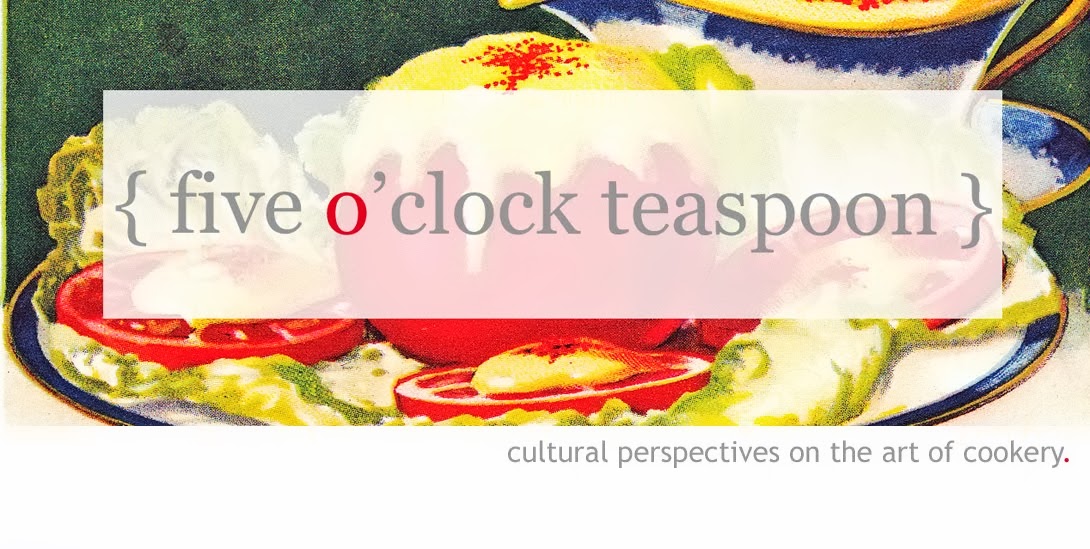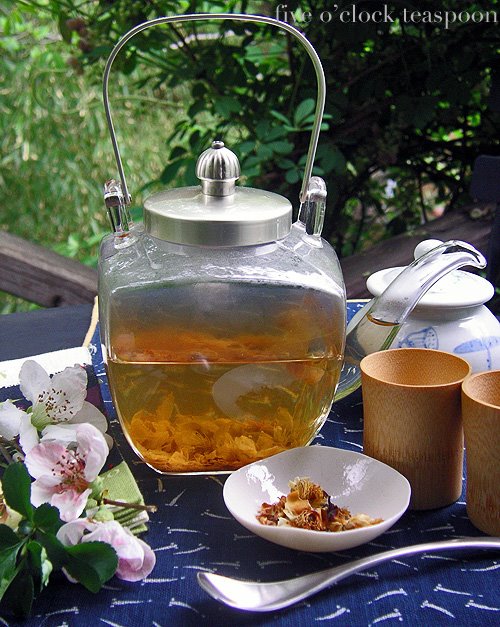
The tasty mukhwas (mouth fresheners) one nibbles on at the end of an Indian restaurant meal are a traditional part of Indian cuisine. Indeed, 17th Century European travellers remarked on the prevalent practice of chewing paan-- areca nut wrapped in betel leaf-- a practice that continues today (Lizzie Collingham, Curry: A Tale of Cooks and Conquerors, Oxford: Oxford University Press, 2006). The type of mukhwas shown here are a mixture of sweet, crunchy, and aromatic ingredients including fennel seeds, coriander seeds, and colored sugar pieces, with oils of peppermint and rose. There are many different blends available for purchase as well as online recipes for homemade versions.
 19th Century German Silver Salt Dish and Salt Spoon
19th Century German Silver Salt Dish and Salt SpoonThese fragrant tidbits can be more than just a snack. Sprinkled atop desserts, the brightly colored mukhwas impart a celebratory appearance and add an unexpected flavor and crunch (with a more interesting taste than regular sprinkles).
 Chocolate Cupcake with Vanilla Buttercream Frosting and Mukhwas.
Chocolate Cupcake with Vanilla Buttercream Frosting and Mukhwas.Because the minty-anise aspect of the mukhwas is so strong, I found it went well with chocolate based desserts, such as the cupcakes and cookies I've shown. The cookie recipe in particular uses no eggs or dairy ingredients and results in a light, chewy texture that pairs well with the mukhwas blend.
 Chocolate Zucchini Cookies Topped with Mukhwas.
Chocolate Zucchini Cookies Topped with Mukhwas.Chocolate Zucchini Cookies (Vegan)
Recipe
Makes about 16
Ingredients:
1 cup flour
1/4 cup cocoa powder
1 cup grated zucchini
1 tsp baking powder
1/4 tsp salt
1/2 cup sugar
1/4 cup coconut oil
1/2 tsp vanilla extract
1/2 cup semisweet chocolate chips for glaze (to keep the recipe vegan, use vegan chocolate chips)
1. Preheat oven to 350ºF. Combine all ingredients except for the chocolate chips in a large bowl and mix well.
2. Place 1" balls of dough about 1 1/2 "apart on a prepared baking sheet and bake for 10-15 minutes. Transfer to a wire rack and cool.
3. While cookies are cooling, heat chocolate chips over low heat in a heavy bottomed pot or double boiler until just melted, stirring constantly.
4. Spread glaze over cooled cookies and decorate with mukhwas mix.


